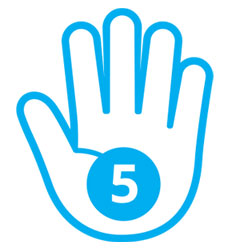Five Elements Theory
The Theory of the Five Elements is a Taoist theory. According to this theory, the world is made up of five fundamental elements: metal, wood, water, fire, and earth. The rise and fall of these Five Elements create cyclical changes in the world. These changes impact all existences on Earth, including mankind.
The theory’s Creation Cycle and Control Cycle define the relationships among these Five Elements.
The Creation Cycle describes the sequential cycle of how the elements are created: Wood burning creates Fire. The ashes resulted from the fire create Earth. Earth’s mines are rich in Metal. Metal at high temperature melts into liquid (Water.) Water nourishes the trees (Wood.) Then the cycle renews and starts all over again…
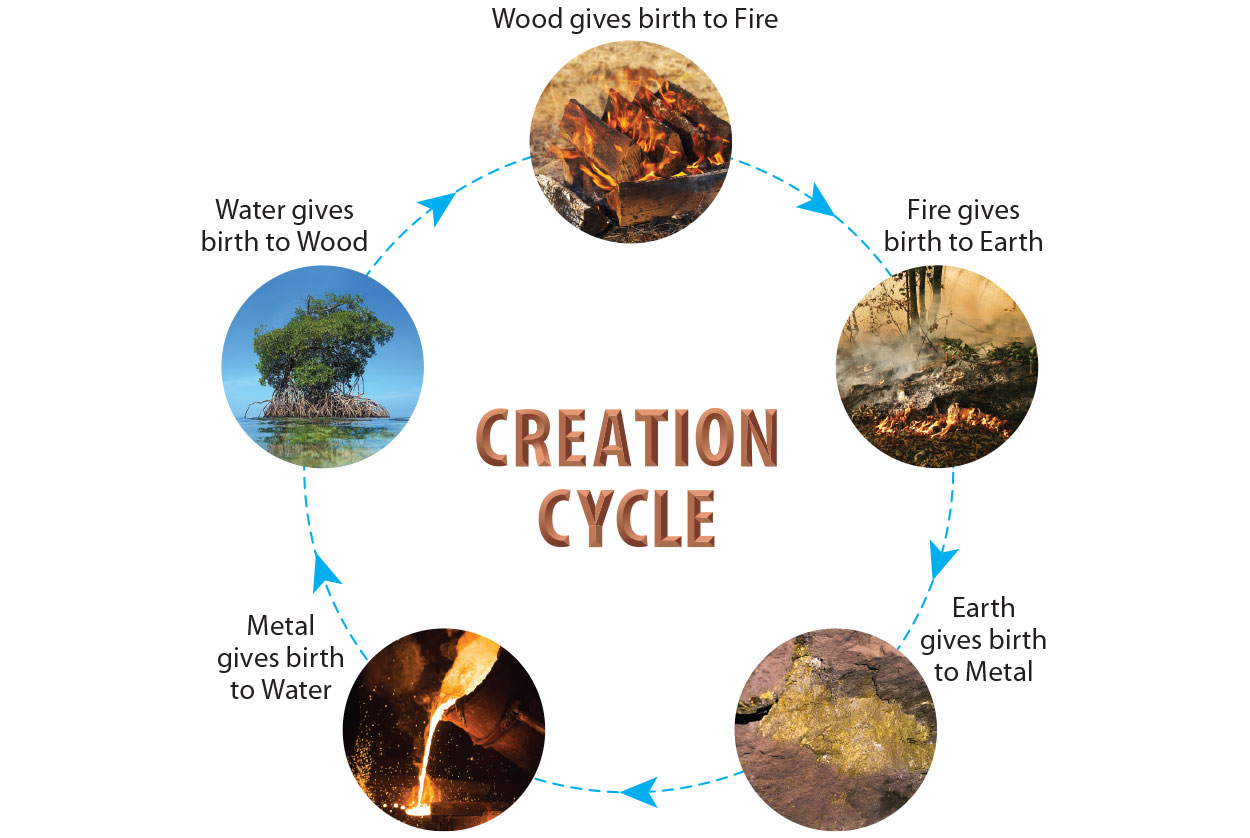
The Control Cycle describes the Five Elements’ mutually controlling relationships. Metal can be used to cut down a tree (Wood.) The roots of trees (Wood) can prevent soil (Earth ) erosion. Earth (levies, dams, sandbags, etc.) can prevent flooding (Water.) Water can put out Fire. Fire can melt Metal.
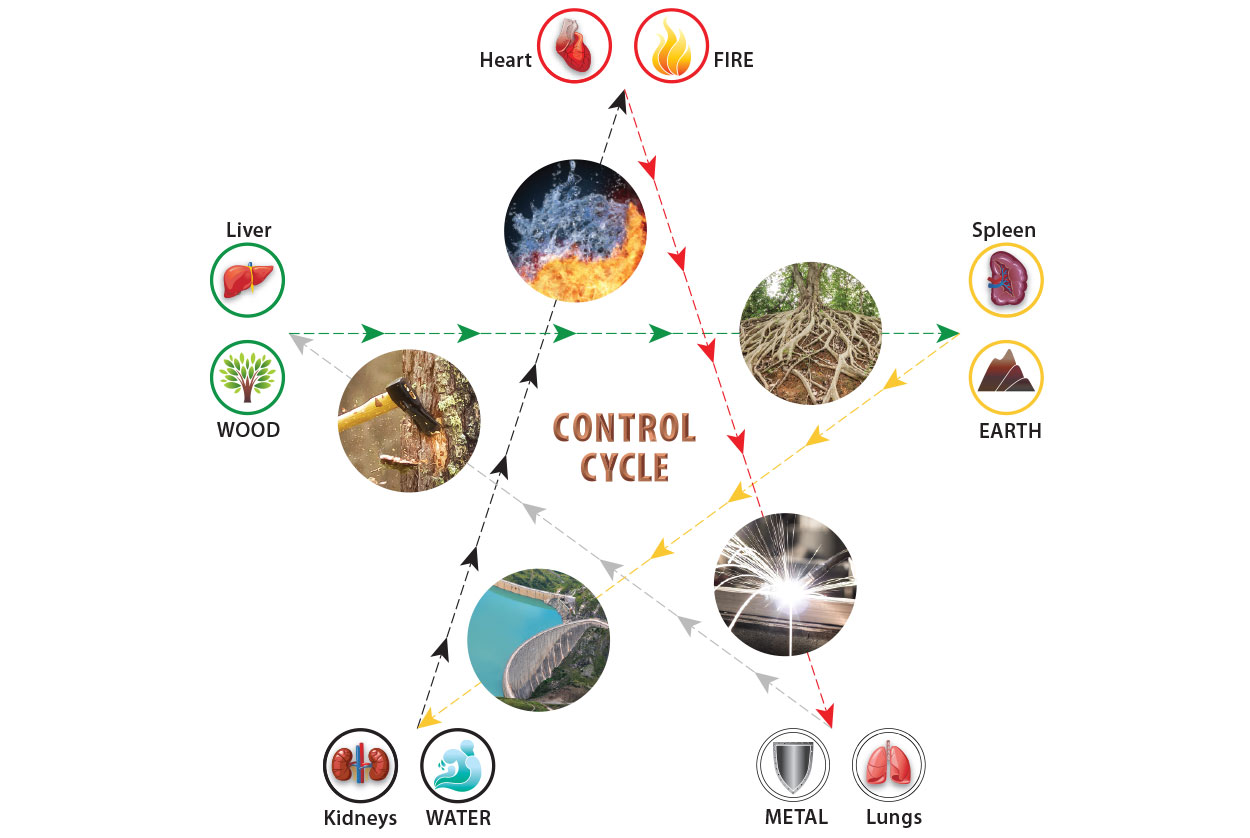
In Taoism, the human body is considered a microcosm: a mini universe within a large universe. Mankind is a part of nature. Through observation, correlations were drawn between the Five Elements and the Five Primary Organs based on the common characteristics they share. No one knows exactly how the linking of Elements and the Organs came about, but the Five Elements theory has stood the test of time. The correlations have been validated through empirical human application over the course of thousands of years.
The following table will help you remember the association between the Five Elements to the Organs.
| Element | Yin Organ | Characteristics |
 Wood |
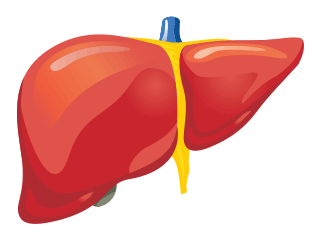 Liver |
Liver dislikes constraint and likes to stretch and expand, much like a tree (Wood.) |
 Fire |
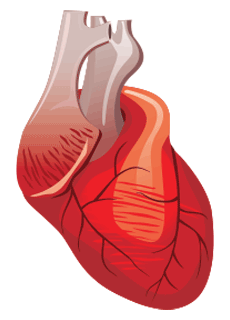 Heart |
Heart moves Qi and Blood. Like Fire, it provides warmth to the entire body. |
 Earth |
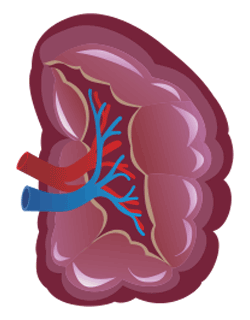 Spleen |
Spleen manages absorbing nutrition and nourishing all the Organs, as Earth nurtures all living things. |
 Metal |
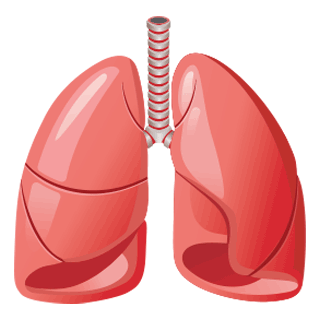 Lungs |
Lungs govern sound. Lungs can produce sonorous sounds like a piece of metal. |
 Water |
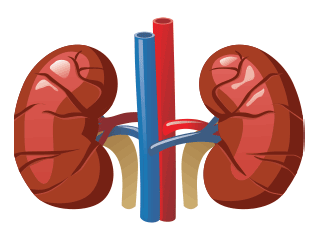 Kidneys |
Kidneys store Jing, our reserves of life force inherited from our parents. Life on Earth originates from Water. |
By inference, the Five Elements’ Creation Cycle and Control Cycle have been used to symbolize, interpret, and predict the inter-relationships among the Five Primary Organs. For example, when Liver is imbalanced, Liver may impair Spleen and Stomach’s digestive functions (Wood controls Earth.) Therefore, your herbalists may recommend a formula to circulate Liver Qi in addition to addressing Stomach discomfort. Another example is the use of tonics to nourish deficient Lungs. Because Lungs are of the Metal element, and Earth creates Metal, then Spleen tonics, which are of the Earth element, may be used to address Lung deficiency.
However, it is important to remember that the Five Elements Theory is a high-level summarization of the Organs’ inner workings. Use it as a general guideline to help you understand that all Organs are interconnected. Always heed the advice of your herbalists and health practitioners.
The five elemental energies correspond to the various aspects of a human being as well as many other related correspondences, such as the five colors, five tastes, and five atmospheric energies of herbs and food. The following table and descriptions may provide some insight into the nature of each elemental energy and their influences on the Five Elements correspondences.
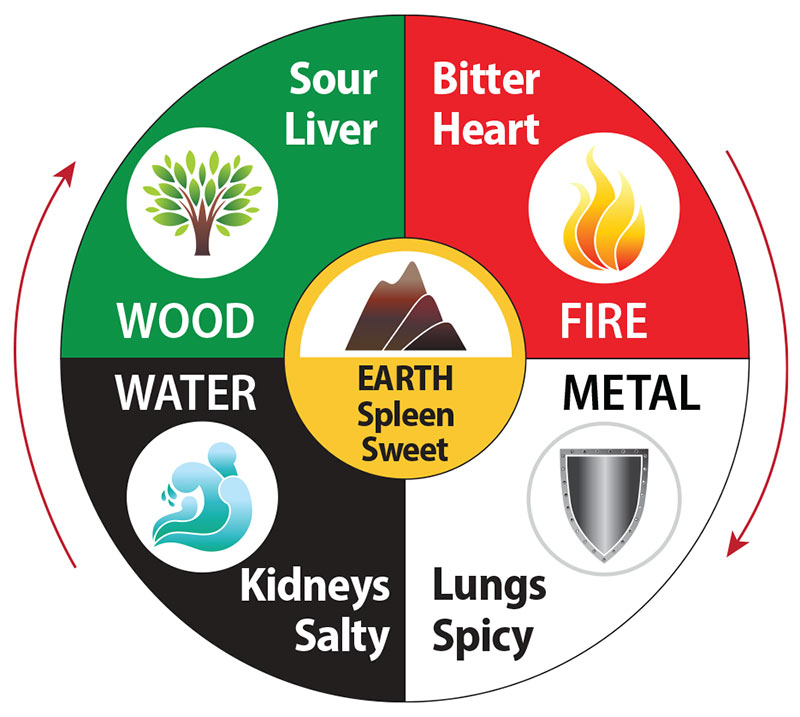 5 Tastes and 5 Colors
5 Tastes and 5 Colors
Each herb or food has a color and one or several of the five tastes. Each taste is associated with an elemental energy, so is each color. Therefore, in general, they can influence the corresponding Organs. For example, He Shou Wu, which is black, enters the Kidneys and is an iconic Kidney tonic. Sweet food enters the Spleen. The Spleen (Earth) controls the Kidneys (Water). Sugar weakens Kidney function over time.
WOOD is new Yang—the first stage of a new cycle. It is aggressive, vigorous energy that bursts forth from the depth of substance, expanding, invigorating all in its field of influence, bringing forth creation and life. Wood is the elemental energy of Spring. It is associated with the “Liver.” The Wood element initiates activity. It is the creative urge and the procreative drive. It is the “will to become”, the urge to grow and develop, to create our own existence. It is that which provokes and drives us.
FIRE is the energy of growth to fullness, of full expansion. Fire is the elemental energy of Summer and is associated with the Heart. It is warm and full and has a fully developed Yang nature. When true Fire is unimpeded, life is joyous, exuberant and loving, supported by courage, strength and wisdom. Contentment, enduring vigor, a cooperative approach to life, clarity of understanding and a free-giving spirit are signs of one whose Fire Element is in proper harmony with the external-being.
EARTH is the energy of balance, of the Center, and is thus always present. It is the pivot, or balancing point, of Yin and Yang. Earth is said to dominate at the change of seasons, during Indian Summer, and during periods of climatic balance. It rules the Spleen energy system and directs the digestive system. It is experienced as a sensation of balance, centeredness, non-striving, non-judgmental contemplation, and sympathetic understanding. It is a mature energy, the energy of the ripening, well-adjusted soul. Earth provides the energy of thought and reflection.
METAL is the energy of Fall. It is thus the energy of retreat, withdrawal and letting go. It represents the transition of Yang energy to Yin energy. Metal controls the Lungs. It manifests as contemplative sifting and letting go of that which is encumbering and useless to our inner life. It is analogous to “harvesting.” It is also the energy of release, freeing ourselves of our old selves, outer attachments and emotional entanglements.
WATER is the energy of Winter. Its power is very great, but highly concentrated. Water is associated with the ‘Kidneys.” It is the energy of the “seed,” the fundamental energy of life which concentrates and matures deep within. It is indeed the very essence, the final distillation of all accumulated energies and is thus of remarkable potential energy. It is our “will to sustain ourselves,” it is our courage. It is also our emergency reserve, it is the power of our mind, and it is the root of our sexual vigor.
Five Elements Correspondences
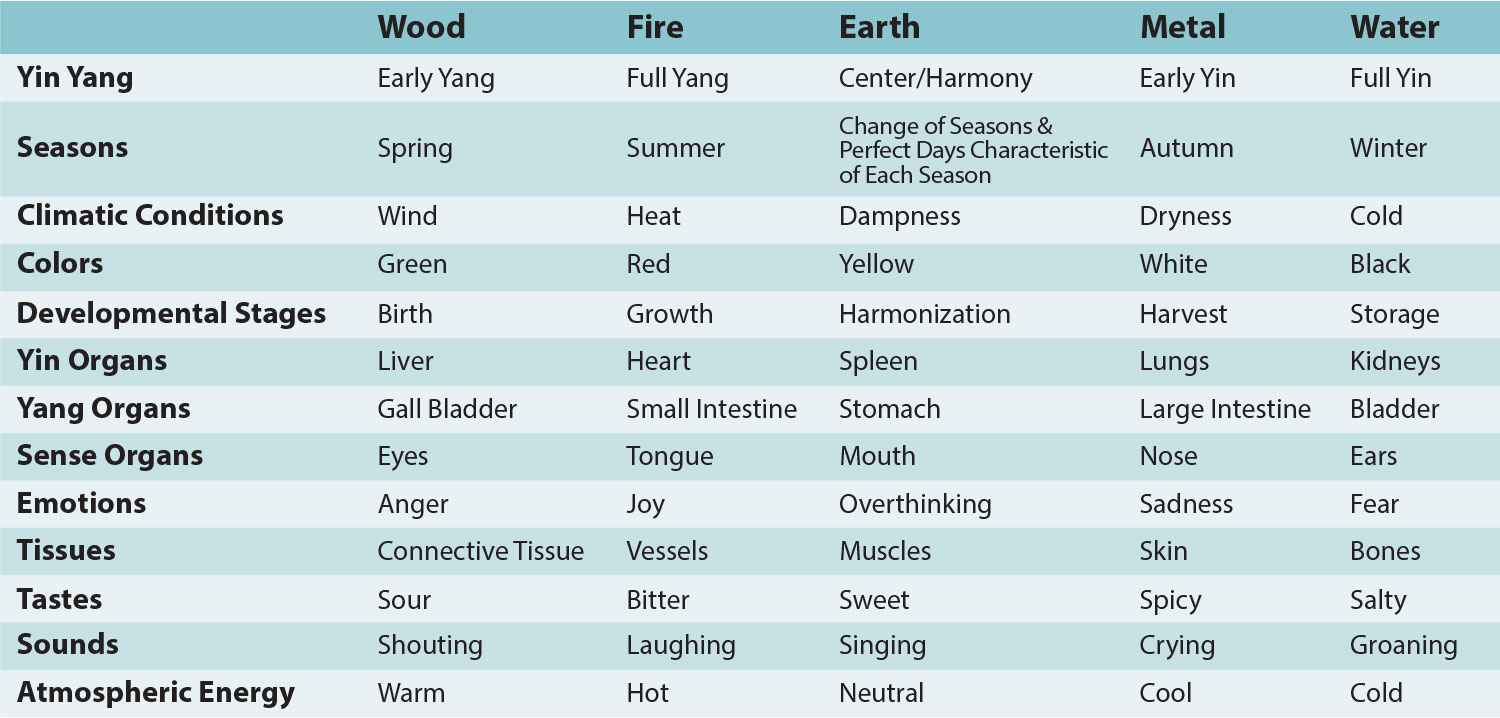
This educational material is provided under freedom of speech for your information only. It is not intended to substitute for the medical expertise and advice of your health practitioners from whom we encourage you to seek advice about treatment or care.
These statements have not been evaluated by the Food and Drug Administraton. This product is not intended to diagnose, treat, cure, or prevent any disease.

